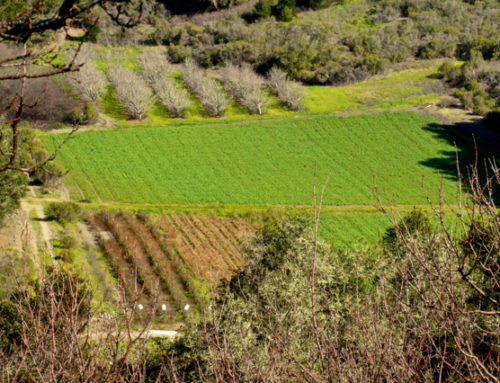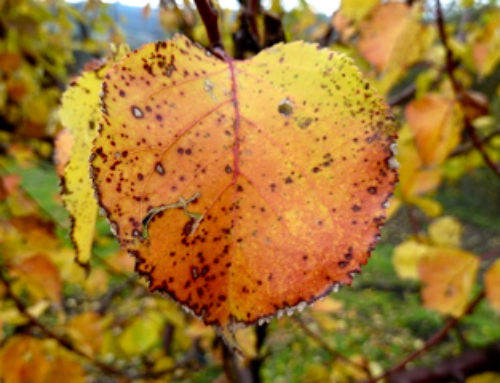It is 5:30am, and we are enjoying another clear fogless morning. Clemente, who’s in charge of irrigation, is up early to water the crops. With a flick of a switch he turns on the main well pump and it doesn’t take long for the water, stored in the aquifer 400 feet below, to gush to the surface at 300 gallons a minute.
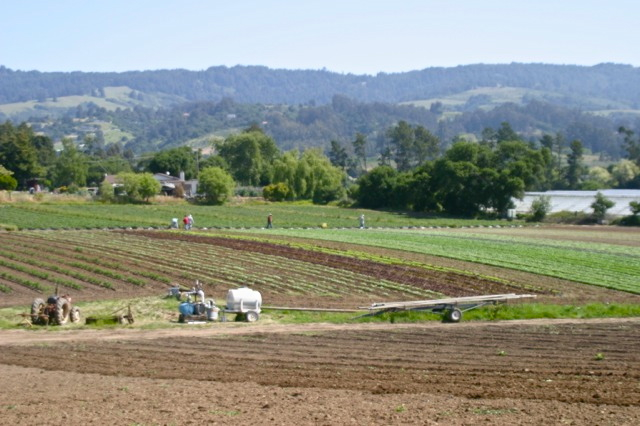
Main farm well and pump (center, blue) in fields
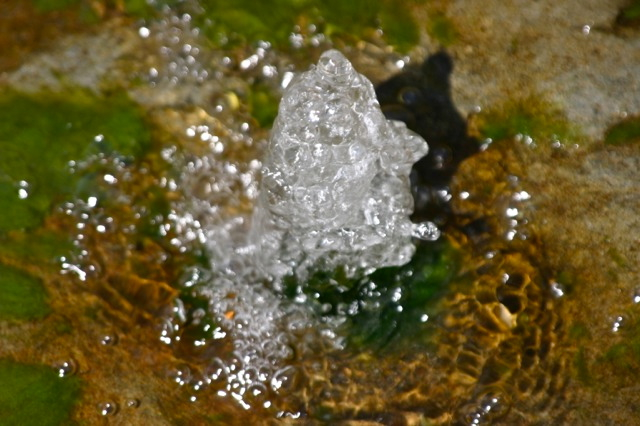
Pumped ground water coming to the surface
It is an impressive amount of water that, like blood in the body, is pumped and directed through an intricate network of underground pipes to every field and orchard on the farm.

Aluminum piping for sprinkler irrigation
With the bulk of our spring plantings now in the ground, we are tending over 40 different crops all needing water to develop into tasty nourishable harvests over the course of the season. Clemente is constantly moving around from field to field, adjusting the water volume and pressure by turning valves on and off. He is busy hauling and setting up sprinkler pipe, installing drip and sprinkler irrigation lines, and always making sure there are no leaks in the system. Especially frustrating are the gophers that chew through driplines in the strawberry fields.
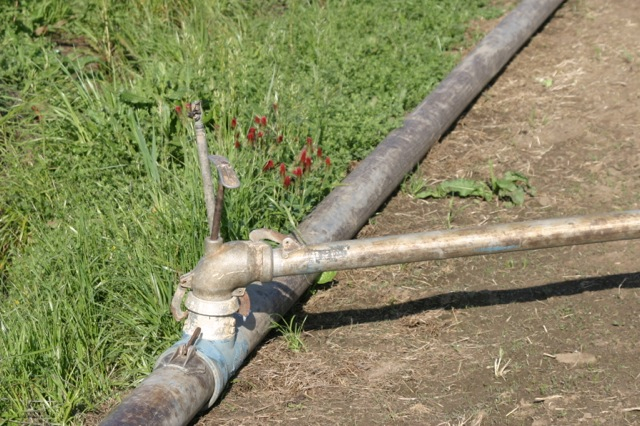
Control valve in sprinkler pipe
Besides having to be intimately familiar with the infrastructure of the farm’s irrigation system, Clemente also needs to assess and schedule watering needs based on soil type, crop maturity, field location, water demand and supply capacities, harvesting and planting, and cultivation schedules. For example, arugula and spinach have different watering needs than green beans. A mature crop will need more water less frequently, whereas a recently planted crop needs less water more frequently.
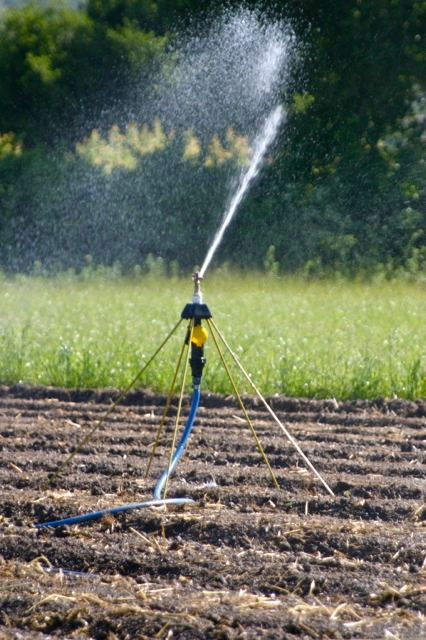
Typical sprinkler irrigation
Cool weather crops such as broccoli, cauliflower, lettuce, and most leafy greens, like to be irrigated with above-ground movable aluminum pipe sprinklers, while crops such as strawberries, tomatoes, peppers, squash, cucumbers, and eggplants get drip irrigation.

Drip line in cherry tomatoes
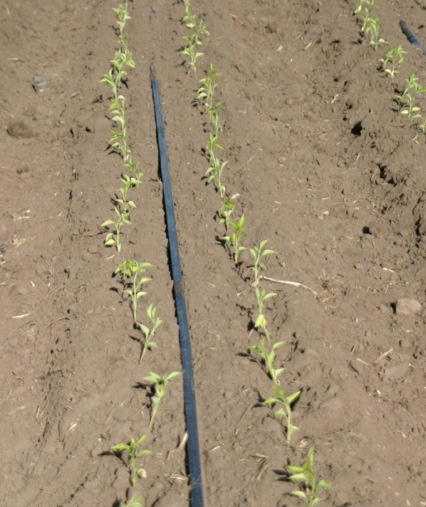
Drip line in recently transplanted peppers
This year is turning out to be a very dry one, and we are starting to irrigate many of our orchards 3 months earlier than in a wetter season. Typically we don’t irrigate our orchards until June or July, but the soil profile has little remaining moisture stored from the brief winter rains. We finished watering the apricots, which I expect to ripen by the end of June together with our Santa Rosa Plums. Next up are the apple trees, which will get a deep soaking after the thinning is finished. Even the dry-farmed tomato fields this year had to be pre-irrigated to ensure the moisture in the soil will be enough for them to survive on.
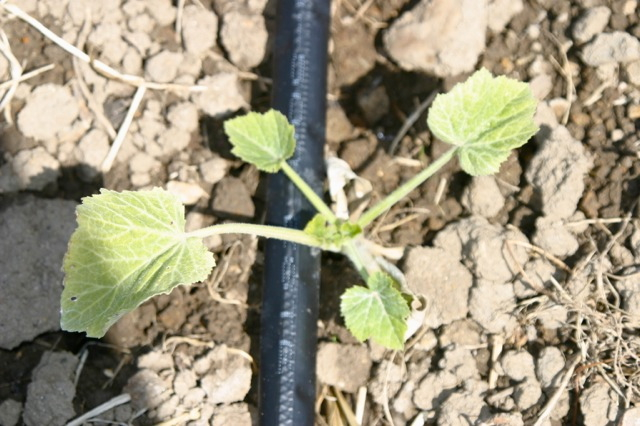
Drip line irrigating squash seedling
With the help of a USDA grant, we are evaluating how new technologies for both drip and sprinkler irrigation can help reduce our current water budget. According to our records, last year we used approximately 62 acre-feet of water to raise our crops. Imagine a football field (an acre is only slightly smaller) covered 62 feet high with water. That’s a lot of water! More than 80 percent of our water for the farm comes from groundwater. The rest comes from rainwater collected in ponds.
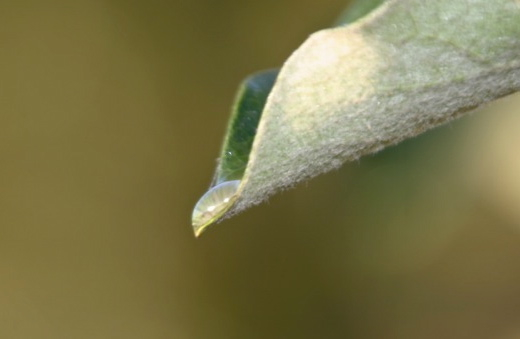
Every drop of water counts
We have grown foolishly accustomed to water that is available whenever we want it. Our ability to manipulate it by pumping, damming, storing and rerouting it has allowed us to farm along these narrow strips of precious fertile soil hugging the Pacific Coast. Water conservation is essential if we want to preserve agriculture, otherwise we just live on borrowed time as we pump water unsustainably for short-term economic gain.

